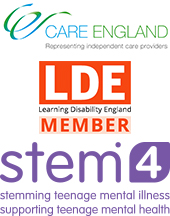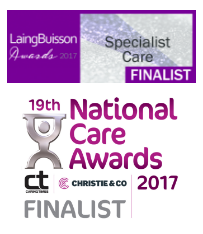What’s the difference between Supported Living and Residential Care?
Supported Living
- The care people receive is personalised and centred around their needs
- People have a tenancy agreement, which means their home is more secure as they are protected by law
- Often there is more integration with the rest of the community and people have more choice about where they live and who they live with (if anyone). People have more personal space too.
- Greater rights, for example, choice about their support staff. They can choose who enters their home and they can choose how they decorate their home.
- Entitled to different benefits, which will give more disposable income.
Residential Care
- More standardised level of care.
- The individual is a patient or client of the care home.
- Sometimes located on campuses away from the rest of the community, with less personal space.
- Less involved in decision-making.
What’s the difference between the various Supported Living models?
Supported Housing / Shared Living
This is the most common model. Supported housing or Shared Living this can be in a service supporting usually between 1 and 4 people, though larger services do exist. Levels of support can vary from a few hours a week to 24 hour support.
Basically, it is a form of support that provides a range of options for adults with intellectual disabilities to be supported in their own home with a tenancy by a qualified contracted provider.
The objective is to provide a warm and supportive home, with the opportunity for individuals to live a more independent life and become part of a community.
Core and Cluster
This option resembles the traditional student halls of residence style of accommodation. Individuals live in single or shared flats usually no more than 2 individuals, with their own bathrooms and cooking facilities – within a building with a shared communal area and support allocated according to need, often care can be shared if suitable, giving people the opportunity to be supported indirectly and increase independence, often this will use assistive technology to enable people to request assistance as needed.
Shared Lives
This option describes an arrangement where an individual lives with a family and rents a room from them. The host family gives support and care. This can be for:
- Long-term support
- A short break
- Daytime support
- Family support for someone who lives nearby, but not with the host family
What if an individual is living in accommodation rented from Optima Care but wants their support services to be delivered by another provider?
Although at Optima Care we employ our own qualified professionals in order to ensure that the quality of our assessment, person-centred planning and ongoing care is high, we recognise that there are times when individuals will prefer to employ support staff from other providers – perhaps if they already have a relationship with them when they take out a tenancy agreement with Optima Care.
In such circumstances, we will guarantee a close working partnership with other providers to ensure positive outcomes for the people we support.
If an individual is in rented accommodation will they be allowed to make any changes to their home?
Of course, although rented it will be the individual’s home. They may decorate it to their personal taste and furnish it with any personal items. In addition, any equipment required and / or minor adaptations (for example, stair rails) to help the individual stay safe and independent and improve their quality of life are encouraged. Individuals may purchase the equipment from their personal budget. Alternatively, they may choose to receive a direct payment which can be used towards purchasing the equipment required, as long as it meets the individual’s community care eligible needs (as assessed by their local authority).
What are Telecare and Assistive Technologies? And does Optima Care’s rented accommodation allow for such things?
Different types of equipment such as walking frames and stair lifts are called assistive technology because they help individuals to be independent. One type of assistive technology is Telecare.
Telecare devices range from those that require the user to press a button – this action raises an alert at a remote centre – to systems that monitor a person’s wellbeing and/or environment. The equipment can help detect falls, inactivity, smoke, flooding, carbon monoxide, or extreme temperatures in the home.
Assistive technology is part of a range of support services that may be obtained by the individual and incorporated into their home following assessment.
What are Direct Payments?
Direct payments may be obtained from an individual’s local authority if they:
- are aged 16 or over and you need community care services; or
- have parental responsibility for a disabled child.
Those aged 16 or over may receive a one-off direct payment for a specific carer’s service following assessment. The local authority will need to agree with the individual in advance what they may spend the money on, but they will aim to offer as much choice as possible. However, the money cannot be used to employ a close relative or a person living in the individual’s house.
For more information, click here to view Kent County Council’s guide to paying with direct payments.





